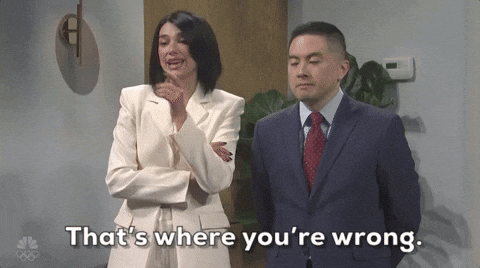- InBoXer
- Posts
- 90% of Businesses Get This Wrong (And It’s Quietly Costing Them Sales)
90% of Businesses Get This Wrong (And It’s Quietly Costing Them Sales)

Most emails fail in the first five seconds.
The reader opens it… scans the first line… and if it doesn’t grab them, they’re gone.
Click. Delete. Next.
It’s not because your product isn’t great.
It’s not because your offer isn’t strong.
It’s because you didn’t hook them fast enough.
This is where 90% of businesses go wrong—and where elite marketers flip the script.
While most companies rush through the body of the email, world-class copywriters do the opposite.
They spend 80% of their time writing the first sentence of the email.
Not the CTA. Not the design. Not the product description.
Just that one line.
Because once the email is opened, the first sentence decides if someone stays—or disappears.
Let’s break down how the best in the world do it… and how you can use the same tactic to boost opens, clicks, and conversions immediately.
Advertisement
Ready to level up your work with AI?
HubSpot’s free guide to using ChatGPT at work is your new cheat code to go from working hard to hardly working
HubSpot’s guide will teach you:
How to prompt like a pro
How to integrate AI in your personal workflow
Over 100+ useful prompt ideas
All in order to help you unleash the power of AI for a more efficient, impactful professional life.
The First Sentence Has One Job
After the email is opened, everything hinges on the first line.
And that line has one job only:
👉 To get the reader to read the next sentence.
That’s it.
Not to explain. Not to educate. Not to sell.
Just to hold attention long enough for your message to land.
If you win that first micro-moment, the rest of the email has a shot. If you lose it, nothing else gets read—no matter how brilliant your copy is.
However MOST businesses blow this moment
Most business emails start the same way:
“Hi, I hope this finds you well…”
“I wanted to share a quick update…”
“As the founder of [Company Name]…”
It’s polite. It’s professional. It’s… forgettable.
These openers kill momentum. They don’t create intrigue. They don’t build curiosity. They don’t pull the reader into anything—they gently ease them into boredom.
And in the inbox, boredom equals death.
What Elite Marketers Do Instead
The best email marketers treat the first sentence like a movie opening.
They don’t ease you in—they throw you into the action.
Take a look at these real-world openers:
“John didn’t know he was going to die that night.”
“When I was 15, five men stole my freedom.”
“She had no idea that saying yes to coffee would cost her everything.”
What do they have in common?
They create instant tension.
They open a loop.
They raise a question the reader has to answer.
This is how elite marketers keep people reading. They turn the first sentence into a cliffhanger.
They spend 80% of their time writing and refining it.
Why?
Because they know everything hinges on that opening moment.
If the first sentence pulls the reader in, the rest of the email becomes exponentially more effective.
It’s a small line, but it carries massive weight.
And top performers treat it with the respect it deserves.
A Simple Formula That Works
Not sure how to write a first line that hits?
Start with this fill-in-the-blank formula:
“When I was [age], [unexpected or emotional moment] happened.”
Examples:
“When I was 11, I got kicked out of school for selling candy.”
“When I turned 40, I realized I hated everything I’d built.”
It’s specific. It’s human. It sparks curiosity.
Other ideas to open your email with:
A bold confession: “I was terrified to send this email.”
A moment of conflict: “He looked me in the eye and said, ‘You’ll regret this.’”
A surprising fact: “I made $24,000 in 3 hours—and didn’t feel a thing.”
Don’t explain everything. Just give them a reason to lean in.
Stop Burying the Good Stuff
Another common mistake?
Hiding the most interesting part of your email three paragraphs down.
That great story you wrote…
That shocking result you shared…
That bold point of view you dropped…
It shouldn’t be buried.
Bring the strongest part of your message to the top—and often, that means folding it right into the first sentence.
If your reader isn’t hooked immediately, they won’t stick around to get to the value later.
First Sentence Checklist
Before you hit send, ask yourself:
Does this sentence open a curiosity loop?
Is it personal, bold, or emotional?
Does it feel like a story, not an intro?
Would I be intrigued enough to keep reading?
If you answer “no” to any of these, revise it.
Tighten it. Raise the stakes. Make it impossible to ignore.
Cheers
The InBoXer Team

